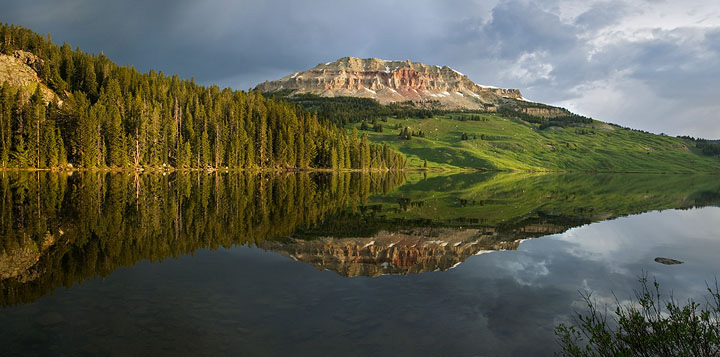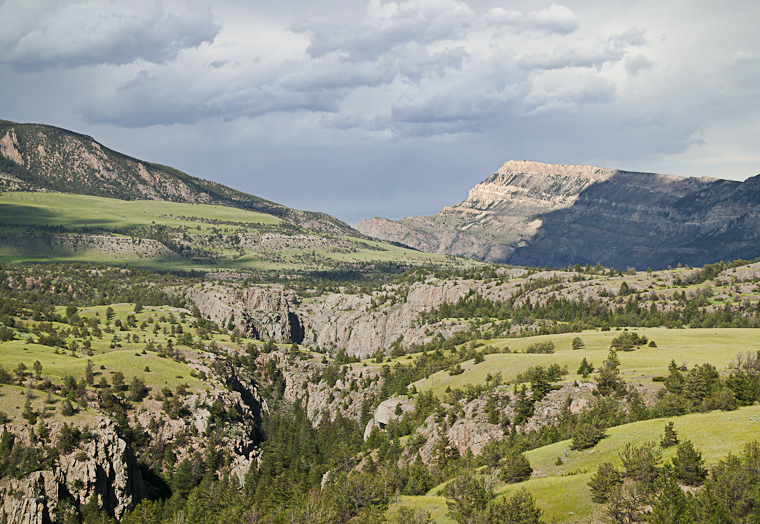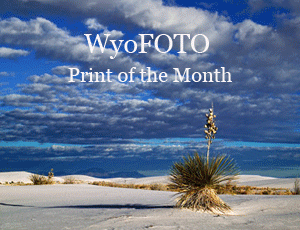`Would you tell me, please, which way I ought to go from here?’ — said Alice
`That depends a good deal on where you want to get to,’ — said the Cat.
`I don’t much care where’ –said Alice.
`Then it doesn’t matter which way you go,’ –said the Cat.
`so long as I get SOMEWHERE,’ –Alice added as an explanation.
`Oh, you’re sure to do that, if you only walk long enough.’ –said the Cat.
From “Alice in Wonderland”
Much like Alice in her journey through “Wonderland” three million tourists a year head to Yellowstone National Park. They arrive from Montana to the North and the Tetons to the South. Bumper to bumper, elbow to elbow they make their pilgrimage just to go SOMEWHERE to America’s most famous national park.
Little do they know they are missing a hidden scenic jewel, nestled just to the east of Wyomings most popular tourist destination
View Beartooth Highwayin a larger map
Click on image for more information
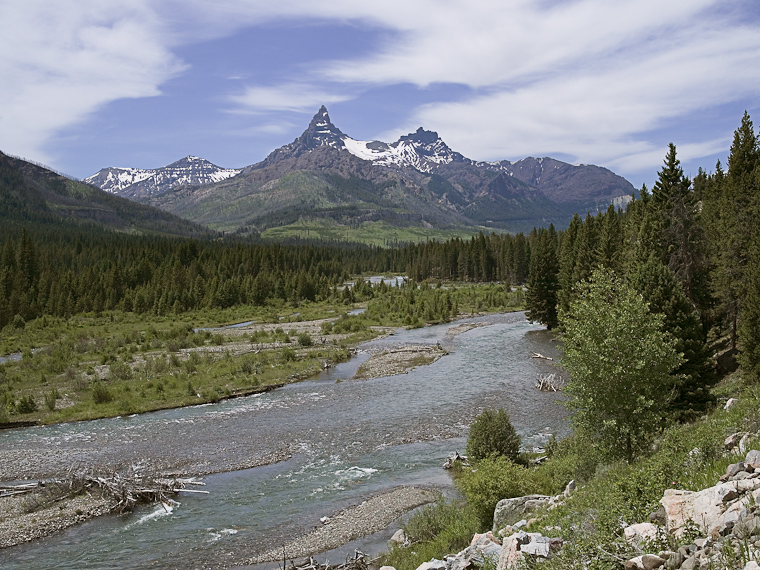
Click on image for more information
The 68 mile long Beartooth Highway and its 36 mile long southern branch, the Chief Joseph Scenic Byway are located mostly in Wyoming just to the east of Yellowstone National Park. It officially opened on June 14, 1936 and this year it celebrated it’s 75th Anniversary! Dubbed the “the most beautiful drive in America”, by Charles Kuralt,CBS broadcasting’s,On the Roadtelevision correspondent, the Highway is a destination in its own right.
Reaching heights of nearly 10,947 feet, this road offers birds eye views of snow capped peaks, glaciers, alpine lakes and plateaus. As you drive it from the east to the west, the highest parts of the Beartooth Highway level off into a wide plateau near the top of Beartooth Pass, and then descend to where the Beartooth Highway connects to the Chief Joseph Scenic Bywaynear Cooke City, which forms the northeast gateway to Yellowstone National Park. Traversing the route, one passes numerous alpine lakes typical of the Absaroka-Beartooth Wilderness Area which borders the highway along much of its length.
The Beartooth Mountains are one of the highest in elevation and most rugged areas in the continental US. Twenty of it’s peaks are over 12,000 feet in elevation. Glaciers are found on the north flank of nearly every mountain peak over 11,500 feet in the Beartooth Range. This Highway system provides thousands of visitors a rare opportunity to experience the transition from a lush forest ecosystem to alpine tundra in the space of just a few miles.
High altitude snowstorms can occur even in the middle of the summer, and the pass is also known for strong winds and severe thunderstorms. It is a good idea to check with theWyoming Travel Information Service, which will provide online information on Beartooth Highway travel conditions, before journeying across the highway.
My absolutely favorite photographic location on this highway system is Beartooth Lake. In the first two weeks of July, when the high alpine region is at it’s maximum state of green, the early morning light here is absolutely spectacular. The golden rays create an other worldly look of alpine splendor, that must be seen to be believed. The photo I have named, “A Darkness Visible”, pictured at the top of this article was taken at this spot. Be warned that the mosquito population is quite high at this time of year. Bring your, “bug juice”, you will need it as you wait for the first rays to come over the horizon.
Another great location, is the Clark’s Fork Overlook. Located on the Chief Joseph Scenic Byway, at a altitude of about 8000ft. In the late afternoon, it provides a spectacular view of the Clark’s Fork of the Yellowstone River. This area is among the most remote locations in all of Wyoming. Most of this very rugged country is accessible only by foot or horseback. The photo you see at right was taken from this location.
Following the Chief Joseph Byway west from this location will take you to its intersection point with the Beartooth Highway proper. If you turn left here, the road follows the Clarks Fork towards Cooke City, Montana. There are many spots where you can pull off the road here and photograph Pilot Peak above the Clarks Fork. The photo seen just above was taken at one of these spots.
Click on image for more information
Click on image for more information
If the scenic overlooks in this region don’t provide enough photographic opportunities for you, there is also abundant wildlife. Large mammals such as black bears, grizzly bears, grey wolves and mountain goats can be found within this area. Small mammals such as pikas and marmots can be seen in great numbers near the top of Beartooth Pass.
Three gateway communities – Cooke City and Red Lodge, Montana and Cody, Wyoming provide the closest access to the Beartooth Highway region. My favorite of the three is Cooke City. It provides the fastest early morning access to the photogenic locations. Be aware though that Cooke City is a very small town and has a limited variety of accommodations and services. One thing to keep in mind is that because of heavy snowfall at the top, the pass is usually open each year only from mid May through mid October. So, plan your trip accordingly!
I hope you’ve enjoyed our short introduction to the Beartooth Highway area. To paraphrase the “The King of Hearts” , we’ve begun at the beginning, and gone on till we’ve come to the end, so we stop. Happy shooting to all our readers.
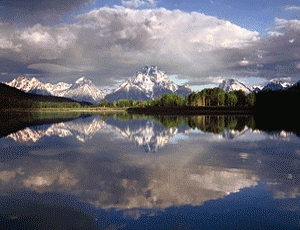
About Miles Hecker
Miles has been involved with photography for over forty years. He teaches digital photography at Casper College in Casper,Wyoming. His photos have won awards fromNatures Best magazine,Photo.net, The Luminous LandscapeandWyoming WIldlife . Miles’ photos have been published in American Vignette, Backpacker Magazine, Natures Best Images, Popular Photography, Wyoming Audubon, and Wyoming Wildlife. He is co-founder ofWyoFOTO LLC.
Geotagged Photolocation Index
September 2011
You May Also Enjoy...
Sleepless Over Sony’s a9 – What Is It Really, and Who Is It For?
Yes, the a9 is sick-fast, arguably sickest-fastest general purpose camera out there. But I actually lost sleep after shooting with it for a full day,
